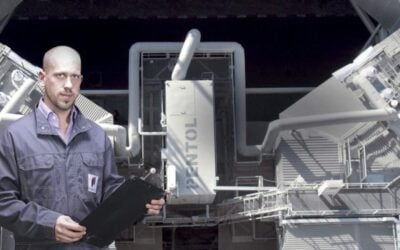CASES – ESP performance enhancements
Dust Removal - SO3 Conditioning
Objectives of the Trial: (ESP Basics):
► Resistivity and Back Corona Effects
Challenges in Dust Removal: ► Imported hard coal replaces regional coal stepwise ► Co-firing of auxiliary fuel ► Improvement of ESP dust separation due to input of imported coal / low sulfur coal ► Changes in regulations, new emission limits according to 13. BImSchV: Dust emissions from 50 lowered to 20 mg/Nm³ ► Difficult to add new ESP/ ESP fields and high invest cost for precipitator field extension
Enhanced ESP Performance: ► CFD-Modeling for ESP Optimization ► The Step Beyond: Coal/Dust Characteristics & Operational Optimization ► Installation of Five New SO3 Conditioning Units in STEAG Plants ► Performance with Low Sulfur Coal.
Challenges in Dust Removal: ► Imported hard coal replaces regional coal stepwise ► Co-firing of auxiliary fuel ► Improvement of ESP dust separation due to input of imported coal / low sulfur coal ► Changes in regulations, new emission limits according to 13. BImSchV: Dust emissions from 50 lowered to 20 mg/Nm³ ► Difficult to add new ESP/ ESP fields and high invest cost for precipitator field extension
Enhanced ESP Performance: ► CFD-Modeling for ESP Optimization ► The Step Beyond: Coal/Dust Characteristics & Operational Optimization ► Installation of Five New SO3 Conditioning Units in STEAG Plants ► Performance with Low Sulfur Coal.
Read the report
Report Client:
Evonik Industries (Steag)
Click to read PDF
REPORT – FGC for ESP
Flue Gas Conditioning
Reduce solid emission, reduce dust load on your FGD plant and increase the whiteness of the gypsum.
![Collecting20electrodes1[1]](https://www.pentol.net/wp-content/uploads/2020/11/Collecting20electrodes11.jpg)
SO3 Analyzer
How much SO3 do you generate? In power generation, SO3 measurements provide data to allow the operator to burn fuel.
![Electrostaticparticipator1[1]](https://www.pentol.net/wp-content/uploads/2020/11/Electrostaticparticipator11.jpg)
How would this work in your plant?
Do you have any question?
Don´t hesitate and get in contact.
Technology we used
Flue Gas Conditioning for Coal Boilers (FGC)
For #Dust Emission Reduction and #Gypsum Quality Improvement

